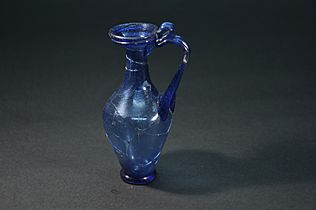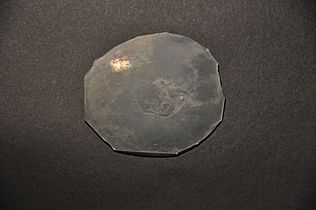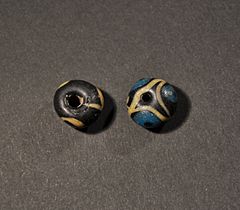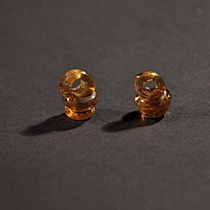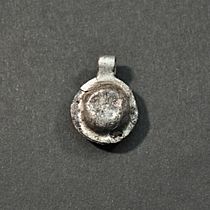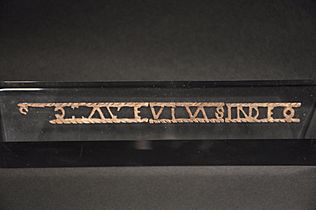Ivory Bangle Lady facts for kids
Quick facts for kids Ivory Bangle Lady |
|
|---|---|
| Created | late 3rd-4th century AD |
| Period/culture | Roman |
| Discovered | 1901 Sycamore Terrace, York, North Yorkshire |
| Present location | Roman Gallery, Yorkshire Museum, York |
The Ivory Bangle Lady is a skeleton discovered in York, England, in 1901. She was a wealthy young woman who lived during the Roman period in the 4th century AD. Scientists believe she might have originally come from North Africa.
Her grave contained many valuable items. These included bracelets, necklaces, earrings, and beads. A glass jug and a mirror were also found with her. A piece of bone with a special message, "Hail, sister may you live in God," was also buried with her.
Contents
Learning About the Ivory Bangle Lady
Scientists have studied the Ivory Bangle Lady's skeleton to learn more about her life. Her bones were found inside a stone coffin.
Her Age and Height
Research from 2010 showed that she was a young adult. She was likely between 18 and 23 years old when she died. Her height was about 152 to 160 centimeters (around 5 feet to 5 feet 3 inches).
Where She Came From
Scientists used special measurements of her skull to guess her ancestry. These tests suggested she might have had North African roots. Other tests on her bones and teeth looked at tiny chemical clues. These clues hinted that she spent her childhood in western Britain or near the coasts of Western Europe or the Mediterranean Sea.
Some scientific methods used to determine ancestry from bones can be tricky. They work best when a skeleton is very complete.
Treasures in Her Grave
The Ivory Bangle Lady was buried with many beautiful items. These are called "grave goods."
Her Jewelry
She wore bracelets made of ivory and jet. She also had a bracelet made of blue glass beads. Silver and bronze pendants were found with her. She also had two yellow-glass earrings.
Other Items
Her grave also held a small, round glass mirror. A dark blue glass bottle, called a flagon, was also found.
The Special Plaque
One very interesting item was an ivory plaque with words carved into it. The plaque said "SOROR AVE VIVAS IN DEO." This means "Hail sister, may you live in God." This message is a Christian saying. It suggests that there were Christians living in Roman York at that time.
Even though the plaque had a Christian message, other clues suggest the lady herself might not have been Christian. For example, her grave was placed in a north-south direction. Christian graves were usually placed east-west. Also, burying someone with many valuable items was more common in pagan traditions. This suggests she might have been pagan but had connections with the Christian community.
See also


